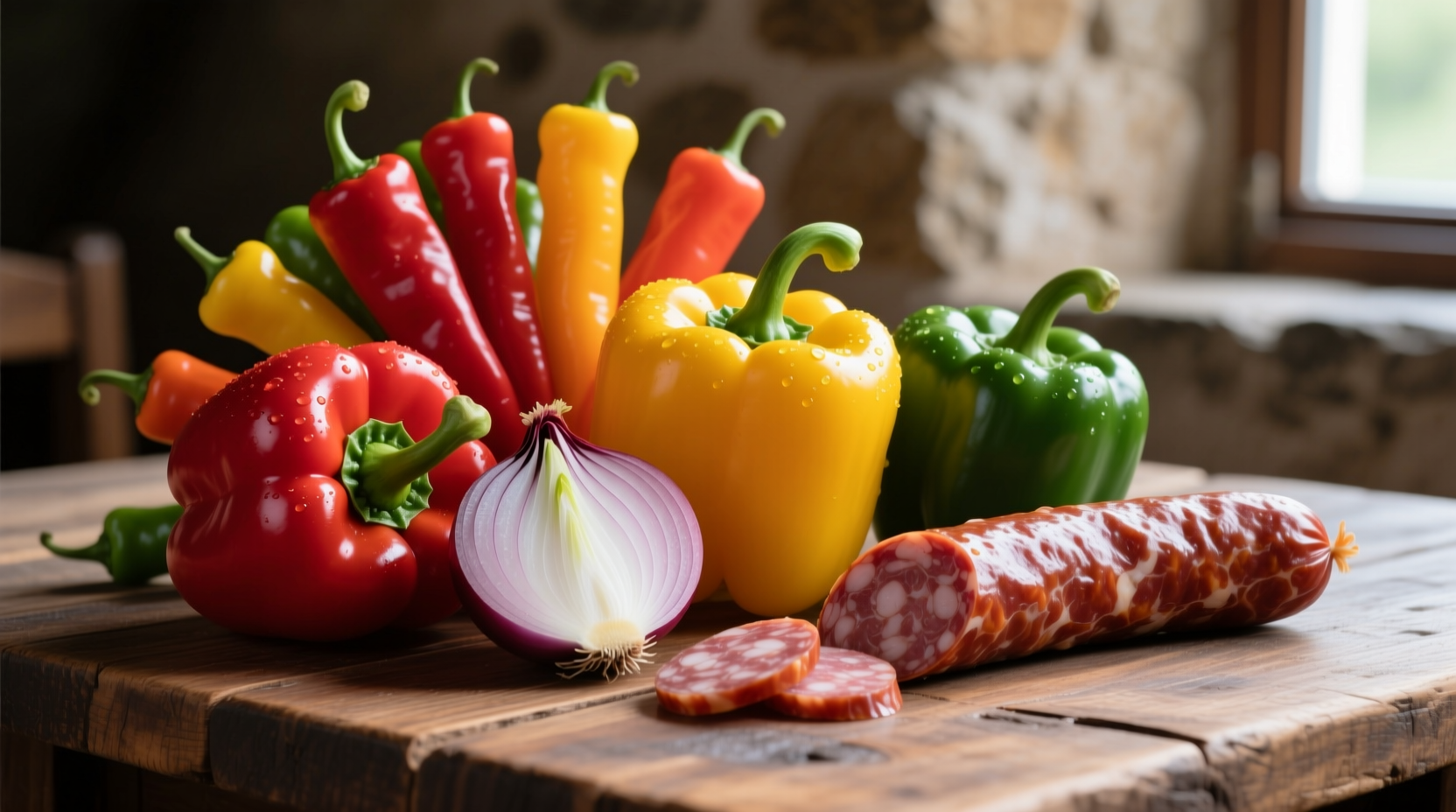The Science Behind This Perfect Flavor Trio
Understanding why peppers, onions, and sausage work so well together begins with their complementary flavor chemistry. Bell peppers contain natural sugars that caramelize beautifully when cooked, while onions develop complex umami compounds through the Maillard reaction. Sausage—particularly Italian or smoked varieties—contributes fat-soluble flavor compounds that carry and enhance the other ingredients' tastes.
According to culinary research from the USDA Food Safety and Inspection Service, the fat content in sausage (typically 20-30%) serves as an ideal medium for transferring flavor compounds from peppers and onions throughout the dish. This creates a harmonious flavor profile where no single ingredient overpowers the others.
Essential Preparation Techniques for Perfect Results
Professional chefs consistently emphasize proper preparation as the key to maximizing this combination's potential. The sequence matters: start with sausage, then onions, and finish with peppers.
| Ingredient | Preparation Method | Cooking Time | Temperature |
|---|---|---|---|
| Sausage | Slice into 1/2-inch coins or remove casing and crumble | 6-8 minutes | Medium-high (375°F) |
| Onions | 1/4-inch slices, separated into rings | 5-7 minutes | Medium (350°F) |
| Peppers | 1/4-inch strips, seeds removed | 4-6 minutes | Medium (350°F) |
This sequence ensures each component reaches its flavor peak without overcooking. The sausage renders fat that prevents sticking and adds flavor to subsequent ingredients, while the residual heat from the pan continues cooking the peppers to perfect tenderness without becoming mushy.
Top 5 Classic Dishes Featuring This Combination
1. Italian Sausage and Peppers
A staple of Italian-American cuisine with roots tracing back to early 20th century New York. Authentic preparation uses sweet Italian sausage, bell peppers, and onions cooked in olive oil with garlic and oregano. The Italian Food Heritage Foundation notes this dish evolved from Southern Italian "peperonata" traditions adapted with available ingredients in America.
2. Chicago-Style Italian Beef Sandwiches
While traditionally made with roast beef, many Chicago establishments offer a popular sausage variation. The peppers and onions become essential components, cooked down until sweet and jammy, then served on crusty bread with giardiniera.
3. Spanish Chorizo with Roasted Peppers and Onions
Using Spanish chorizo (which is cured rather than fresh) creates a different flavor profile. The paprika-infused sausage pairs beautifully with roasted red peppers and sweet onions, often finished with a splash of sherry vinegar.
4. Breakfast Skillet
A weekend favorite combining crumbled breakfast sausage with colorful bell peppers and onions, often topped with eggs. For best results, cook the sausage first, then add vegetables, and finish with eggs cooked to your preference.
5. Sheet Pan Sausage Dinner
Modern meal prep favorite where sliced sausage, peppers, and onions are tossed with olive oil and herbs, then roasted on a single sheet pan at 400°F for 20-25 minutes. This method requires minimal cleanup while delivering restaurant-quality results.

When This Combination Works Best (And When It Doesn't)
While versatile, this trio has specific context boundaries where it shines or falls short:
- Perfect for: Quick weeknight meals, meal prep containers, sandwiches, pasta toppings, pizza ingredients, and breakfast dishes
- Less effective for: Delicate seafood pairings, dessert applications, or when using extremely spicy sausage with sweet peppers (creates flavor conflict)
- Best sausage choices: Sweet Italian sausage (most versatile), chicken apple sausage (lighter option), Spanish chorizo (for smoky depth), or turkey sausage (leaner alternative)
- Avoid: Pre-cooked sausages with artificial flavors that can make the entire dish taste processed
Professional Kitchen Secrets for Elevated Results
From years working in professional kitchens, I've learned these techniques transform this simple combination:
- Don't overcrowd the pan: Cook in batches if necessary to ensure proper caramelization rather than steaming
- Add acid at the end: A splash of red wine vinegar or lemon juice brightens the rich flavors
- Reserve sausage drippings: Use for cooking pasta or potatoes to incorporate all flavors
- Try different pepper varieties: Mix red, yellow, and orange bell peppers for complex sweetness
- Finish with fresh herbs: Basil, parsley, or oregano added at the end provide brightness
Storage and Leftover Strategies
Proper storage extends the life of this combination significantly:
- Cooked mixture stays fresh in airtight containers for 4-5 days in the refrigerator
- Freeze portions for up to 3 months—thaw overnight in refrigerator before reheating
- Reheat gently in skillet with small amount of oil to restore texture
- Creative leftovers uses: omelet filling, pizza topping, pasta sauce base, or stuffed into bell peppers
Troubleshooting Common Issues
Even experienced cooks encounter these challenges with peppers, onions, and sausage:
- Soggy vegetables: Result of overcrowding pan or covering while cooking—always cook uncovered
- Burnt onions: Reduce heat after adding to rendered sausage fat; onions should sizzle gently
- Dry sausage: Choose sausages with 20-30% fat content; don't overcook beyond 160°F internal temperature
- Flavor imbalance: Add pinch of sugar if too acidic, or splash of vinegar if too sweet











 浙公网安备
33010002000092号
浙公网安备
33010002000092号 浙B2-20120091-4
浙B2-20120091-4